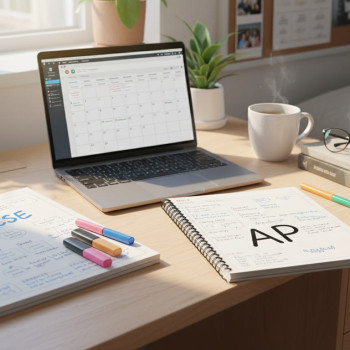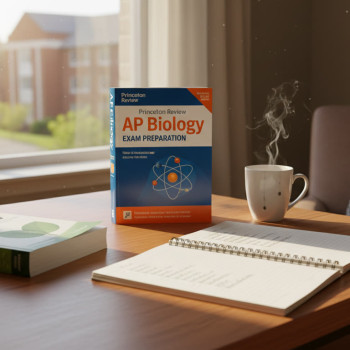Why a Science-Only Practice Test Protocol Matters
If you’re preparing for AP Biology, AP Chemistry, AP Physics 1/2 or AP Physics C, you probably know that doing practice questions helps — but doing practice the right way is what turns effort into improved scores. A science-only practice test protocol focuses your energy on the knowledge, reasoning, and lab-based skills that these exams demand. It helps you replicate the exam environment for the parts of the test that matter most to science students: multiple-choice reasoning, data interpretation, graph reading, experiment design, and free-response scientific argumentation.
Think of this protocol as a lab procedure for studying: clear steps, reproducible conditions, and an analysis phase that tells you what to change next. Below, you’ll find a practical, student-friendly routine you can use alone, with classmates, or with a tutor — plus a schedule and scoring matrix to track gains over time.
Overview: The Four Pillars of an Effective Science Practice Test
Every focused practice session should include four pillars. They’re short, clear, and repeatable — which makes measuring progress straightforward.
- Simulate: Create test-like conditions (timing, materials, minimal distractions).
- Attempt: Work through the section with strategies targeted to science questions.
- Analyze: Log mistakes, identify root causes, and annotate your work.
- Correct & Reinforce: Re-teach/redo errors, practice targeted drills, and integrate new notes into study cycles.
Why these pillars work
Simulating builds familiarity and reduces exam-day anxiety. Attempting under conditions encourages your brain to find efficient strategies. Analysis turns scattered mistakes into a pattern you can address. Correcting changes fragile knowledge into durable expertise. Repeat that cycle weekly and your practice evolves into a powerful training regimen.
Before You Start: Materials, Environment, and Mindset
Set yourself up like a scientist preparing an experiment. Small choices matter.
- Choose a quiet place and set a single-timer for each section. If your exam will be digital, try practice on a laptop or tablet; if it’s paper, print practice sections.
- Gather a calculator (if allowed for the AP subject), scrap paper, colored pens for annotating graphs, and your course formula sheet if your teacher allows one for practice.
- Turn off notifications and give yourself a single block of uninterrupted time. Treat this as sacred lab time.
- Have a notebook or digital document ready for a structured error log.

Step-by-Step Protocol: Science Sections Only
Below is a detailed, reproducible protocol you can follow every time you practice a science section. It’s built for AP science tests where multiple-choice and free-response science reasoning are central.
1) Warm-Up (10–15 minutes)
Start with a light, focused warm-up to activate relevant knowledge. Do 8–12 mixed short questions (not full sections) that span the major content areas for the exam (cell biology, stoichiometry, kinematics, etc.). The goal is mental activation — not scoring. Time: 10–15 minutes.
2) Full Section Simulation (50–90 minutes depending on the subject)
Choose one full science section (for example, the multiple-choice section of AP Biology or AP Chemistry). Strictly enforce the timing used on the real exam. Work under the same constraints: no outside notes unless that reflects your testing format. If doing a free-response section, write full answers and show reasoning as you would on exam day.
- Use a timer for each subsection so that you practice pacing — research-based pacing beats last-second guessing.
- Mark questions you’re uncertain about and flag them for a second pass if time allows.
3) Immediate Self-Scoring (20–40 minutes)
Score your answers right away using an answer key or rubric. For multiple choice, do this question-by-question so the reasoning behind incorrect choices is fresh. For free-response, compare your answers to scoring rubrics. Don’t guess about partial credit: mark what you truly earned and annotate why you lost points.
4) Error Analysis (30–45 minutes)
This is the high-value part. For each incorrect response, write a structured note:
- Question #: What was asked?
- Answer chosen vs. correct answer.
- Root Cause: Knowledge gap, calculation mistake, misread graph, careless error, timing, or test strategy failure.
- Fix: Specific practice task to correct the root cause (e.g., rework concept notes, run 5 targeted multiple-choice items on reaction kinetics, redraw the graph from the prompt).
Store these notes in a persistent log so you can track recurring weaknesses.
5) Targeted Correction (20–60 minutes)
Don’t just mark mistakes — actively correct them. If a question revealed a weak conceptual area, spend 20–40 minutes studying that concept with targeted resources: a brief video, a textbook section, or a guided problem set. If the issue was misreading graphs, do a short drill that focuses only on interpreting axes, units, and trends.
6) Re-Test Mini-Session (15–30 minutes)
After corrections, redo a mini-set of 8–12 items related to your mistakes. Time it lightly and treat it like a verification test. This step cements correction and gives immediate feedback on whether the fix worked.
Weekly and Monthly Schedules: Balancing Practice with Instruction
Context matters. If you’re deep in the course, integrate practice sessions with classroom learning. If you’re in the final months before the exam, increase test-frequency and emphasize full-section simulations.
| Phase | Weekly Practice | Focus | Example Schedule |
|---|---|---|---|
| Early Season | 1 short simulation + 2 targeted sessions | Topic building, basic skills | Warm-up Mon, short sim Wed, targeted drills Fri |
| Mid Season | 1 full section + 2 correction sessions | Pacing, deeper conceptual work | Full sim Sat, analysis Sun, mini re-tests Tue & Thu |
| Final 6 Weeks | 2 full sections + daily quick drills | Exam stamina, mixed review | Full sim Sun & Wed, quick 20-min drills daily |
This table is a template — adapt timing and frequency to the number of AP science tests you’re taking and your school’s schedule. If you’re juggling multiple science APs, alternate sections across days (e.g., Biology multiple choice Monday, Chemistry FRQ Tuesday).
Strategies for Different Question Types
Science AP questions test different skills. Here are specific strategies matched to common formats.
Data Interpretation and Graphs
- Always read axis labels and units twice. Put a box around units to avoid dimensional mistakes.
- Summarize the trend in one sentence before choosing or calculating an answer.
- Sketch a quick line if the prompt’s graph is small or messy — drawing slows you down in a good way and clarifies relationships.
Experimental Design and Methods
- Identify independent and dependent variables early. Ask: what is being changed, and what is being measured?
- State a control condition explicitly in free-response answers — that clarity wins points.
- Mention potential sources of error and how to minimize them (sample size, calibration, randomization).
Quantitative Calculations
- Estimate before calculating to catch unreasonable results (order-of-magnitude check).
- Write units with every step; units often reveal where algebra went wrong.
- If time is tight, answer with the formula’s symbolic manipulation first, then plug numbers in — this reduces rework.
Constructed Response / Essays
- Use a mini-outline: claim, evidence, reasoning. For biology, tie back to a mechanism; for chemistry, invoke conservation laws or reaction kinetics.
- Label diagrams and graphs clearly — labeled evidence is often rewarded.
- Answer concisely. Clean, correct logic is better than long, shaky paragraphs.
Scoring and Tracking: A Simple Metrics Table
To track improvement, use a consistent scoring sheet. Record raw points, percent correct, time per section, and error categories. Below is a recommended single-session scoring table you can copy into a notebook or spreadsheet.
| Session Date | Exam & Section | Time Allowed | Raw Score | Percent Correct | Top 3 Error Types | Next-Step Fixes |
|---|---|---|---|---|---|---|
| 2025-10-01 | AP Biology MCQ | 60 min | 38/60 | 63% (example) | Graph interpretation, stoichiometry basics, rushed reading | Graph drills; stoichiometry review; pacing practice |
Keep this table over months and look for trends: are you consistently losing points to one error type? That’s your highest-leverage target for study time.
Group Runs, Teacher-Led Sessions, and Tutoring
Practice tests can be social or solo. Each format has strengths.
- Group runs: Good for sharing strategies and exposing blind spots. After a timed run, debrief for 30–45 minutes and compare reasoning on the trickiest items.
- Teacher sessions: Great for clarifying rubric expectations on free responses. Teachers can model how to structure answers and where graders award points.
- 1-on-1 tutoring: Ideal when your errors are clustered and personalized fixes are needed. A tutor can craft targeted drills, model explanations, and help you practice exam-writing skills under time pressure.
For students who want a focused, individualized approach, Sparkl’s personalized tutoring can fit naturally into a practice-test routine. One-on-one guidance, tailored study plans, expert tutors, and AI-driven insights can shorten the feedback loop after each practice test — meaning you spend more time fixing the right things and less time guessing what to study next.
Common Pitfalls and How to Avoid Them
Even great students make predictable mistakes. Here are pitfalls and practical fixes.
- Pitfall: Doing too many untimed problems. Fix: Build timed simulations into your weekly routine; treat untimed drills as concept work only.
- Pitfall: Surface-level review. Fix: Use the error analysis structure above — go for root causes, not quick fixes.
- Pitfall: Ignoring partial credit strategies. Fix: Practice showing work clearly for free-response questions; partial points come from clear logic and labeled steps.
- Pitfall: Not simulating fatigue. Fix: Occasionally run back-to-back sections to build stamina and practice transitioning between question types.
How to Use AP Classroom and Official Practice Resources
Official practice questions, topic checks, and released items are gold. Use AP Classroom (through your teacher) for targeted topic questions and progress checks. When you finish an official practice section, run it through the same protocol: simulate, attempt, analyze, correct, and re-test.
Make sure to align the practice resource’s format (digital vs. paper) with the expected exam format. If the exam is going digital in your exam year, practice navigating the digital interface so you don’t lose time fumbling with tools during the real test.
Endgame: The Final Four Weeks
In the last month before the exam, shift intensity and focus:
- Increase full-section simulations to twice weekly.
- Focus corrections on the top three persistent weaknesses you’ve tracked in your scoring table.
- Prioritize sleep, nutrition, and short active recovery days — cognitive endurance is biological, and rest is study strategy.
- Use timed, closed-book conditions for at least one simulation each week to maintain exam readiness.
This is also a great time to make the most of any one-on-one tutoring hours you’ve budgeted. Short, focused sessions that target stubborn question types or rubric strategies deliver big returns.
Day Before and Day Of: Practical Reminders
One day before the exam:
- Do a short, low-stress review (30–45 minutes) of your notes and the top 10 sticky concepts.
- Prepare materials: calculator (with fresh battery), pencils, erasers, and anything allowed by the exam rules.
- Sleep. Aim for 8 hours — better-rested brains perform significantly better on reasoning tasks.
On test day:
- Eat a balanced breakfast, avoid heavy sugar spikes, and hydrate.
- Arrive early and use breathing techniques if you feel anxious — a brief box-breathing routine can reset focus in minutes.
- For the first five minutes of the test, skim the section to find approachable questions and build momentum. Start with those, then tackle the tougher items.

Putting It All Together: A Sample 6-Week Plan
Here’s a sample plan that distills the protocol into a realistic routine. It assumes you’re balancing school and AP prep and want steady, measurable improvement.
- Weeks 1–2: One full-section simulation per week, two targeted topic sessions, weekend error analysis and corrections.
- Weeks 3–4: Increase to one full-section simulation and one mini-simulation per week, daily 20-minute drills on persistent weaknesses, start back-to-back section runs on weekends.
- Weeks 5–6: Two full-section simulations per week, daily short drills, nightly review of the top 10 sticky concepts, final rubric practice on free-response timing.
If you’re working with a tutor, schedule one session per week in Weeks 1–4 and increase to two short sessions per week in Weeks 5–6 focused on final polishing and exam strategy. Tutors, especially when paired with AI-driven insights and tailored study plans like Sparkl offers, can help you prioritize which errors to fix first and structure targeted practice efficiently.
Final Words: Why Consistency Beats Cramming
Science AP exams reward clear reasoning, practice with authentic question formats, and calm, procedural thinking. A disciplined practice-test protocol — one that simulates the test, analyzes errors, and targets fixes — is the most reliable path to improvement. Over time, those small, structured sessions build not just content knowledge but test intuition: knowing how to interpret a messy graph, how to set up a calculation without hesitation, and how to present a concise scientific argument under time pressure.
Remember: practice tests are not an end in themselves. They are diagnostics. The real power comes from what you do after the test. Keep the analysis honest, correct with intention, and gradually increase fidelity to exam conditions. Use every mistake as a map to the next study target, and don’t hesitate to use personalized support if you need it — thoughtful, expert coaching can make sure your practice time is high-impact.
Quick Checklist: Your Science Practice-Test Kit
- Timer or stopwatch
- Calculator (as allowed)
- Answer keys and rubrics
- Persistent error log
- Short correction plans (20–40 minutes each)
- At least one guided tutoring session every 1–2 weeks during high-intensity months
Closing encouragement
AP science exams are a marathon of reasoning and clarity, not a sprint of memorization. With a repeatable practice-test protocol, you’ll convert mistakes into mapped-out fixes, increase confidence, and sharpen the scientific thinking graders are seeking. Stay curious, stay methodical, and remember — steady, targeted practice wins. If you want help translating your error log into a tailored study plan, consider scheduling a short session with a tutor who can turn those patterns into efficient next steps. Small, data-driven coaching moments often unlock the biggest score improvements.
Good luck — you’ve got this. Take the test like a scientist: observe, hypothesize, test, and iterate.



















No Comments
Leave a comment Cancel